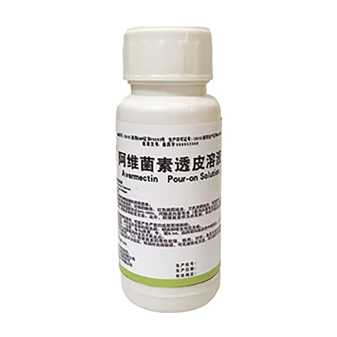- Afrikaans
- Albanian
- Amharic
- Arabic
- Armenian
- Azerbaijani
- Basque
- Belarusian
- Bengali
- Bosnian
- Bulgarian
- Catalan
- Cebuano
- Corsican
- Croatian
- Czech
- Danish
- Dutch
- English
- Esperanto
- Estonian
- Finnish
- French
- Frisian
- Galician
- Georgian
- German
- Greek
- Gujarati
- Haitian Creole
- hausa
- hawaiian
- Hebrew
- Hindi
- Miao
- Hungarian
- Icelandic
- igbo
- Indonesian
- irish
- Italian
- Japanese
- Javanese
- Kannada
- kazakh
- Khmer
- Rwandese
- Korean
- Kurdish
- Kyrgyz
- Lao
- Latin
- Latvian
- Lithuanian
- Luxembourgish
- Macedonian
- Malgashi
- Malay
- Malayalam
- Maltese
- Maori
- Marathi
- Mongolian
- Myanmar
- Nepali
- Norwegian
- Norwegian
- Occitan
- Pashto
- Persian
- Polish
- Portuguese
- Punjabi
- Romanian
- Russian
- Samoan
- Scottish Gaelic
- Serbian
- Sesotho
- Shona
- Sindhi
- Sinhala
- Slovak
- Slovenian
- Somali
- Spanish
- Sundanese
- Swahili
- Swedish
- Tagalog
- Tajik
- Tamil
- Tatar
- Telugu
- Thai
- Turkish
- Turkmen
- Ukrainian
- Urdu
- Uighur
- Uzbek
- Vietnamese
- Welsh
- Bantu
- Yiddish
- Yoruba
- Zulu
10 月 . 07, 2024 13:29 Back to list
enrofloxacin injection for cats
Enrofloxacin Injection for Cats An Overview
Enrofloxacin is a broad-spectrum antibiotic that belongs to the fluoroquinolone class. It is widely used in veterinary medicine, particularly for treating bacterial infections in cats and other animals. This article will explore the use of enrofloxacin injection for cats, its indications, dosage, side effects, and precautions.
Indications
Enrofloxacin is indicated for the treatment of various bacterial infections in cats. It is effective against a wide range of gram-negative and some gram-positive bacteria, making it a versatile choice for veterinarians. Common conditions treated with enrofloxacin include urinary tract infections, skin infections, respiratory tract infections, and certain gastrointestinal infections. Its effectiveness against resistant bacterial strains has also made it a valuable option when other antibiotics fail.
Dosage
The dosage of enrofloxacin for cats depends on the specific condition being treated and the cat's weight. Typically, the drug is administered via injection by a veterinarian or trained professional. The usual dosage ranges from 2.5 to 5 mg per kg of body weight once a day. It is crucial for cat owners to follow their veterinarian's recommendations for the correct dosage and frequency to minimize the risk of side effects and ensure effective treatment.
Administration
enrofloxacin injection for cats

Enrofloxacin injections are usually given subcutaneously (under the skin) or intravenously (directly into a vein). When administering the injection, proper aseptic techniques should be employed to prevent infection. It is essential that this medication is given under veterinary supervision, especially for cats with underlying health issues or those receiving other medications.
Side Effects
While enrofloxacin is generally well-tolerated, it is not without potential side effects. Some cats may experience mild gastrointestinal disturbances, such as vomiting or diarrhea. More serious side effects can include dizziness, seizures, or changes in behavior. In rare cases, certain breeds, such as cats of the Bengal or Siamese lineage, may be more susceptible to adverse effects affecting their central nervous system. Therefore, monitoring your cat's condition after injection is vital, and any unusual symptoms should be reported to a veterinarian immediately.
Precautions
Before administering enrofloxacin to your cat, it is essential to inform your veterinarian of any pre-existing health conditions or medications your pet is currently taking. Enrofloxacin should be used cautiously in cats with liver disease, kidney issues, or those who are pregnant or nursing. Furthermore, this antibiotic should not be administered simultaneously with antacids or medications containing calcium, as they can interfere with its effectiveness.
Conclusion
Enrofloxacin injection is a powerful tool in treating infections in cats. When used appropriately, it can effectively resolve various bacterial infections, leading to a swift recovery. Always consult with a veterinarian to ensure safe and effective use of this antibiotic for your feline companion.
-
The Power of Radix Isatidis Extract for Your Health and Wellness
NewsOct.29,2024
-
Neomycin Sulfate Soluble Powder: A Versatile Solution for Pet Health
NewsOct.29,2024
-
Lincomycin Hydrochloride Soluble Powder – The Essential Solution
NewsOct.29,2024
-
Garamycin Gentamicin Sulfate for Effective Infection Control
NewsOct.29,2024
-
Doxycycline Hyclate Soluble Powder: Your Antibiotic Needs
NewsOct.29,2024
-
Tilmicosin Premix: The Ultimate Solution for Poultry Health
NewsOct.29,2024













